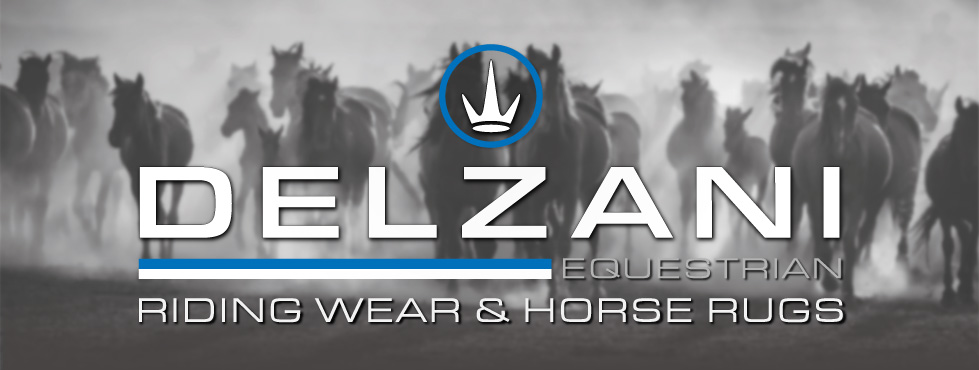Fly Bonnets for Horses: Do They Really Stop Head-Shaking and Distraction?

Do Fly Bonnets Really Work? How They Help Horses Stay Focused, Calm and Insect-Free
Updated September 2025
A practical guide for Australian riders on how fly bonnets reduce head-shaking, improve focus, and protect sensitive horses from insects and noise - including when to use them, how to fit them, and what features to look for.
It’s one of the most frustrating sights for any rider: you’re trying to school a neat circle or settle into a rhythm on the trail, and your horse won’t stop flicking its head, tossing the reins, or stamping at invisible pests. In Australia, where flies, mozzies, and midges seem relentless for half the year, it’s no surprise that many riders turn to fly bonnets for relief. But the question remains, do they really work, or are they just a show-ring accessory?
The truth is that fly bonnets can do more than complete a turnout look. When properly fitted and made from the right materials, they reduce irritation, protect sensitive ears, and even help nervous horses stay focused in busy environments. Here’s how to decide if your horse could benefit from one.
Why Horses Shake Their Heads
Head-shaking is often a horse’s way of telling you something isn’t right. In summer, the most common culprit is biting insects swarming around the ears and face. But dust, wind, and even noise can also trigger constant tossing. While it’s important to rule out medical issues with your vet if head-shaking is persistent, many cases in everyday riding come down to environmental irritations, the kind a fly bonnet can address.
How Fly Bonnets Help
A bonnet creates a barrier between your horse’s ears and the outside world. Insect-resistant mesh stops flies from biting sensitive ear skin, while soft padding keeps the lining comfortable even during long sessions. Some riders also find bonnets reduce startle responses to sudden noises, as the fabric muffles sound slightly without blocking awareness. In the show ring, that little bit of extra focus can make a big difference.
Fit and Comfort Matter Most
Not all bonnets are created equal. The best ones combine breathable mesh with a stretch fit that hugs under the bridle without shifting. Too loose, and it slips out mid-ride. Too tight, and you’ll create rubs that irritate more than the flies. Look for bonnets with generous ear space and reinforced stitching at stress points so they last through daily schooling, not just competition days.
Australian Conditions: Heat, Dust and Insects
Our climate demands more from a bonnet than overseas riders might expect. Horses in humid states like Queensland need lightweight, breathable mesh that won’t trap sweat. In dry regions, dust and seed heads are constant irritants. A bonnet can stop flicks caused by burrs or fine particles blowing into the ears. And across the country, from bush trails to showgrounds, flies and midges are always part of the picture. A bonnet designed for airflow and durability is far from optional in these conditions; it’s a practical solution.
When to Use a Bonnet (and When to Skip It)
Fly bonnets shine in work settings: training, hacking, and competition. They’re particularly useful in busy warm-up arenas or when riding near water sources where midges swarm. For paddock turnout, however, masks provide better overall coverage. Think of bonnets as a riding tool, not an all-day solution. Always introduce them gradually, giving your horse a chance to adjust to the feel before relying on them in a pressured environment like a show.
Why Delzani Fly Bonnets Stand Out
At Delzani, we design bonnets with the Australian rider in mind. Our Deluxe Fly Bonnet with Enclosed Ears uses soft raised mesh for airflow, reinforced stitching for durability, and enclosed ear covers to block pests. The bonnet sits neatly under a bridle without bulk, making it equally at home in the arena or on a bush trail. For horses with extra-sensitive skin, the option of removable ears and nose flaps allows you to customise protection without sacrificing comfort or style.
Pairing Bonnets with Other Protection
While bonnets are excellent for ridden work, they’re just one piece of the puzzle. Many Australian owners combine them with fly masks for turnout and fly rugs for full-body protection during summer. Using the right gear for the right setting not only keeps your horse more comfortable but also extends the life of each item. A bonnet used in the saddle, a mask used in the paddock, it’s about matching tools to the job.
This article provides general information only and is not veterinary advice. If your horse’s head-shaking persists despite environmental management, consult a veterinarian for further assessment.
Ready to give your horse a calmer, more comfortable ride? Explore Delzani’s Fly Masks and Bonnets, built tough for Australian summers.
Written by Jane Griffiths - An experienced Australian horse owner and product developer with over three decades immersed in equestrian life. Jane has spent years refining horse rugs, tack, and riding apparel to better suit Australian climates. She has enjoyed countless weekends at gymkhanas, show jumping events, and pony club competitions with her daughter, and still loves hitting the trails with friends whenever she can. Her lifelong passion for horses and hands-on understanding of equine comfort continue to shape her practical, rider-first approach to horse care and product design.
Related Equestrian Guides
Fly Masks & Fly Veils for Horses
Keep your horse calm, protected, and focused this summer with Delzani fly masks and veils, breathable comfort, Sun defence, and rider-trusted performance built for Australian conditions.
Fly Mesh Boots Troubleshooting & Care: Stop Slipping, Rubbing and Wear
Tired of fly boots that slip, rub, or wear out halfway through summer? This guide shows how the right fit, mesh and care routine keep boots secure, breathable and long-lasting plus why Delzani Fly Mesh Boots are built to handle Australian conditions.
Do Fly Masks Really Work for Horses? Fit, Safety and Comfort in Australian Summers
Fly masks do more than block insects - they protect eyes from bacteria, reduce sunburn risk, and keep horses calmer in Australia’s harsh summers. Learn how correct fit, breathable mesh, and Delzani’s smart designs keep horses safe, cool, and comfortable.
Can Horses See Through Fly Masks Clearly? Vision & Safety in Australia
Can horses see clearly through fly masks? Yes. This guide explains how mesh veils, deluxe bonnets, and the Apollo SkyBreeze differ in vision, safety, and comfort, helping Australian riders choose the right style for their horse.
Can Fly Masks Cause Sweating or Rubbing? What Australian Owners Need to Know
Australian guide to horse fly masks, covering sweating, rubbing, fit, daily care, climate considerations, and how Delzani’s breathable designs protect horses from flies, dust, and UV without causing irritation.











